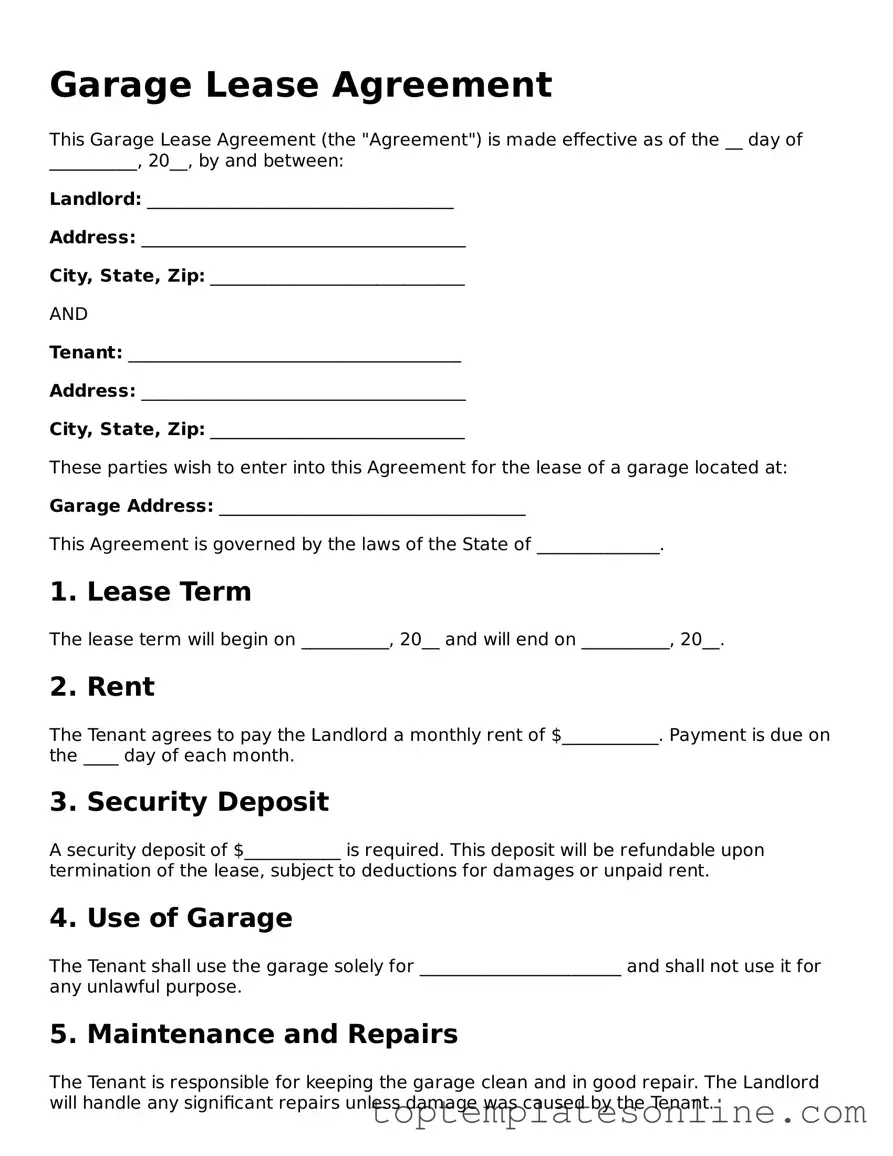Attorney-Approved Garage Lease Agreement Form
A Garage Lease Agreement is a legal document that outlines the terms and conditions under which one party rents a garage space from another. This agreement serves to protect the interests of both the landlord and the tenant, ensuring clarity regarding rental payments, duration, and responsibilities. Understanding this form is essential for anyone looking to secure a garage for personal or commercial use.
Customize Garage Lease Agreement Here
